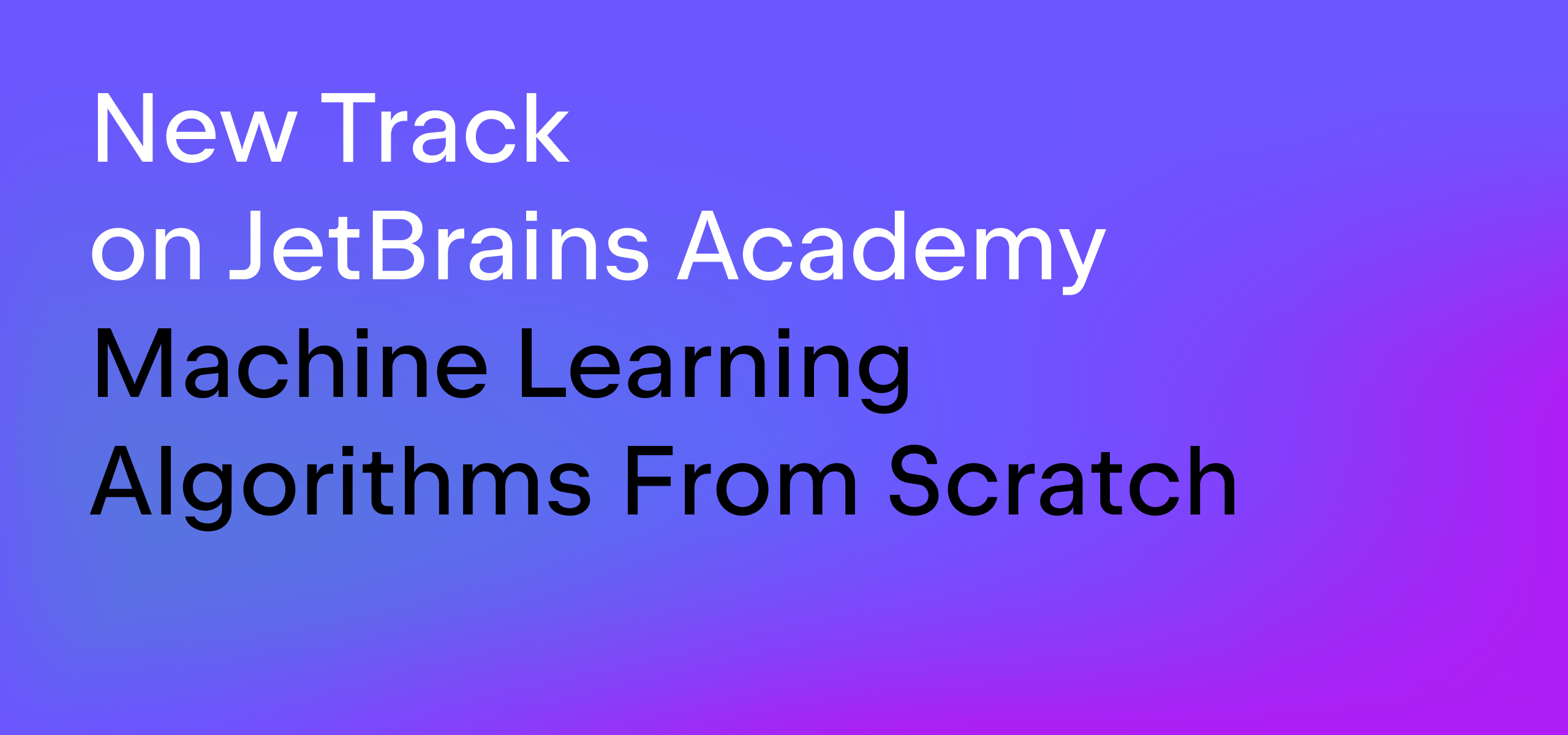How to Implement Machine Learning Algorithms From Scratch
Machine learning (ML), a subfield of artificial intelligence, is essentially creating computer systems trained to make their own predictions without being explicitly programmed.
Whether you notice it or not, machine learning already influences our everyday lives and the decisions we make. Every time you use language translation apps, browse through your streaming service’s recommendations, or look for the optimal route via online maps, you engage with machine learning.
One of the best ways to get a deep understanding of how ML algorithms work under the hood is to learn how to build them step by step. To help you with that, JetBrains Academy is introducing a new Machine Learning Algorithms From Scratch track, which provides fundamental knowledge and hands-on experience in creating the most common ML algorithms in Python.

Benefits of learning ML algorithms with Python
Machine learning can be complicated when getting started, so learning to write ML algorithms from scratch is a great learning exercise. This skill will form a strong foundation for implementing and customizing the more complex, state-of-the-art models that ML engineers typically work on.
Thanks to its simple syntax and readability, Python is one of the best languages to use when learning ML. It supports many frameworks and libraries that allow for more flexibility when solving the problems you have.
When it comes to working on machine learning projects in Python, PyCharm is one of the best-known IDEs. PyCharm offers useful features like code completion and inspections, project navigation, and more. With JetBrains Academy’s integration with PyCharm, you can work on your projects right in the IDE, allowing you to use all of the IDE functionality to the fullest.
What you’ll learn
The new track is suitable both for those who are already familiar with ML basics and those who are just taking their first steps in the field. For seasoned learners, we have prepared a few challenging data science projects to test your knowledge.
The “Machine Learning Algorithms From Scratch” track will introduce you to the math, computer science, and data science essentials, giving you an overview of fundamental Python constructs. You will get a chance to familiarize yourself with the most common machine learning algorithms and master them by completing projects.
In this track, you will:
✅ Cover ML math topics, including statistics and probability.
✅ Learn about Python libraries, including pandas and NumPy.
✅ Study the basics of supervised and unsupervised learning.
✅ Explore common algorithms and evaluation metrics for regression and classification problems.
The projects you’ll build
The track covers 200 educational topics adapted to your current level and 11 real-world projects to discover how ML algorithms work. Let’s take a closer look at two projects covering the core topics:
🌳 Decision Tree with Pen and Paper. Easy ~6 hours.
Decision trees are a popular machine learning algorithm that resembles the human decision-making process. It is a versatile tool that can be used to solve both regression and classification problems. By completing this project, you will build two simple models with the Gini index and information gain, and make predictions for the new samples.
Grab a pen and let’s get started!

📈 Logistic Regression from Scratch. Challenging ~30 hours.
Logistic regression is a common classification algorithm that is used to predict the probability of a categorical dependent variable. In this project, you will learn the math behind the algorithm and build a custom binary classifier.
The goal of this project is to implement a gradient descent for two different cost functions, devise a method of predicting the probability that a given sample belongs to a certain class, and analyze training errors. Last but not least, you’ll put your models to the test on a real dataset.

Career opportunities
Machine learning is a broad field that opens up many different career opportunities. One of the most popular positions in the industry is ML engineer. Other jobs where you can apply your machine learning background include Data Scientist, Cybersecurity Analyst, AI engineer, or NLP engineer.
If you are interested in one of the most in-demand careers for the next few decades, machine learning is a good start. For more opportunities to study ML, check out our other tracks:
- Cover the basics with Math for Machine Learning: Essentials.
- Learn how to manage data with SQL Fundamentals.
- Study different aspects of data science and complete practical ML tasks with Python libraries in First Glance at Data Science.
Implementing your first ML algorithm from scratch is a very rewarding learning experience and we hope you enjoy studying with us! Feel free to share your feedback with us here in the comments or contact us at academy@jetbrains.com.
Happy (machine) learning,
Your JetBrains Academy team
Subscribe to JetBrains Academy updates









